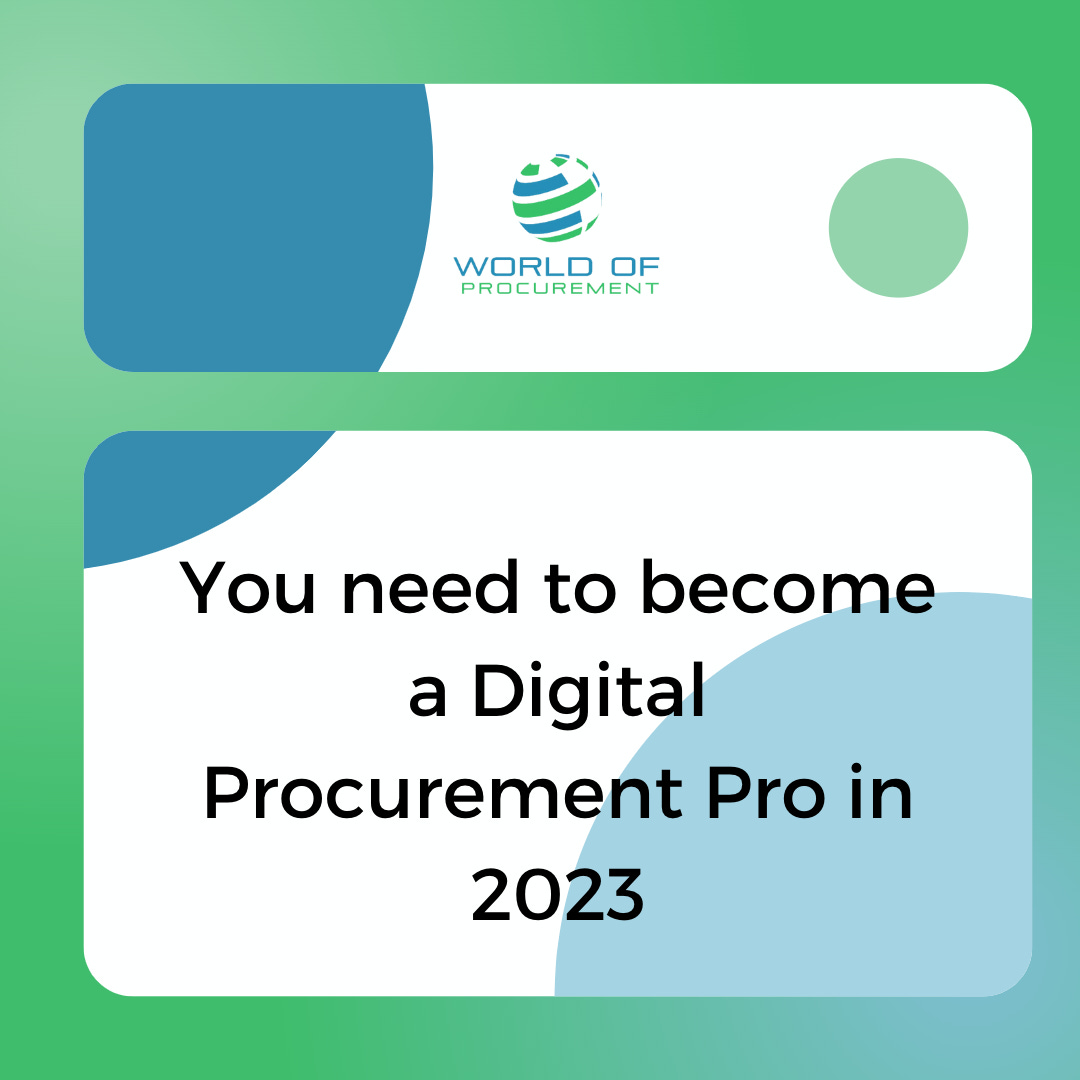Discover Procurement Legends
Procurement Legends

Procurement Legends
Author: Procurement News and Insights for Digital Procurement Pros
Subscribed: 78Played: 610Subscribe
Share
© Daniel Barnes
Description
Welcome to "Procurement Legends," the go-to podcast for professionals seeking invaluable insights in the realms of Procurement, Supply Chain, and Contract Management. If you're looking to gain a competitive edge, you've come to the right place.
What Sets Us Apart:
Deep Dives: We don't just skim the surface. We delve into the intricacies of current trends, technologies, and legislation that are revolutionising the industry.
Best Practices: Our experts shed light on proven strategies and methods, covering the A to Z of sourcing, negotiations, and contract management, equipping you with practical tools to excel.
Global Perspectives: Real-world case studies and actionable examples from across the globe give you a well-rounded understanding of how to adapt and thrive in varying market conditions.
Personal Branding: Your career isn't just about technical know-how; it's about standing out. We'll guide you through building a compelling personal brand to become a key player in your field.
Building a Procurement Second Brain: Information overload is a real challenge. Learn how to construct a 'Procurement Second Brain' to efficiently capture, organise, and implement knowledge, streamlining your decision-making process.
Business Implementation: Get ready to take notes, because you'll want to start implementing our tips and tactics within your own organisation as soon as you've finished listening.
Tune in for thought-provoking discussions, compelling interviews, and actionable advice, all aimed at transforming you into a bona fide Procurement Legend.
We speak with the most Senior and the most Junior people within Business, as everyone has a perspective and fresh ideas that can really help you operate within your business.
worldofprocurement.substack.com
What Sets Us Apart:
Deep Dives: We don't just skim the surface. We delve into the intricacies of current trends, technologies, and legislation that are revolutionising the industry.
Best Practices: Our experts shed light on proven strategies and methods, covering the A to Z of sourcing, negotiations, and contract management, equipping you with practical tools to excel.
Global Perspectives: Real-world case studies and actionable examples from across the globe give you a well-rounded understanding of how to adapt and thrive in varying market conditions.
Personal Branding: Your career isn't just about technical know-how; it's about standing out. We'll guide you through building a compelling personal brand to become a key player in your field.
Building a Procurement Second Brain: Information overload is a real challenge. Learn how to construct a 'Procurement Second Brain' to efficiently capture, organise, and implement knowledge, streamlining your decision-making process.
Business Implementation: Get ready to take notes, because you'll want to start implementing our tips and tactics within your own organisation as soon as you've finished listening.
Tune in for thought-provoking discussions, compelling interviews, and actionable advice, all aimed at transforming you into a bona fide Procurement Legend.
We speak with the most Senior and the most Junior people within Business, as everyone has a perspective and fresh ideas that can really help you operate within your business.
worldofprocurement.substack.com
86 Episodes
Reverse
The AI Procurement Blueprint is a reader-supported publication. To receive new posts and support my work, consider becoming a free or paid subscriber.The "AI Procurement Blueprint" is presented as a practical guide for integrating artificial intelligence into procurement processes, catering to professionals at all experience levels. It outlines six key capability pillars necessary for success, including strategic vision, AI fluency, governance, data storytelling, ecosystem innovation, and AI-augmented negotiation. The source emphasises that AI's role is not to replace human jobs but to elevate capabilities and redefine responsibilities, leading to more strategic, technology-enabled, and outcomes-focused procurement. It further details how various procurement roles are evolving into hybrid, tech-enabled positions, providing actionable steps for individuals and organisations to develop these crucial skills and implement AI pilots effectively.How is AI transforming the procurement profession, and what is its impact on existing roles?AI is fundamentally reshaping procurement by elevating capabilities and redefining responsibilities, moving the profession towards a more strategic, technology-enabled, and outcomes-focused approach. It is not about replacing people but about augmenting their abilities. Existing roles are evolving into hybrid, tech-enabled positions where AI handles repetitive, rules-based tasks, freeing up professionals to focus on higher-value work. For instance, category managers are now designing supplier ecosystems and co-innovation programmes, sourcing analysts are managing AI-driven sourcing waves, and contract specialists are overseeing AI-assisted contract creation. New senior roles like AI Procurement Manager and Head of Digital Procurement & AI are also emerging to orchestrate AI operating models and platform strategies.What are the six key capability pillars essential for procurement professionals in an AI-driven future?The six essential capability pillars for procurement professionals in an AI-driven future are:* Strategic Vision and Systems Leadership: Aligning AI adoption with broader business goals like growth, resilience, and sustainability, and building connected systems.* AI Fluency and Prompt Craft: Confidently using AI tools, guiding them with clear instructions, checking their accuracy, and transforming outputs into actionable insights.* Governance, Ethics, and Assurance: Ensuring compliance with regulations (e.g., EU AI Act), applying strong controls, performing bias checks, and maintaining human oversight for transparent and auditable AI-assisted decisions.* Data Storytelling and Influence: Presenting AI-driven insights as compelling narratives that demonstrate clear business impact (e.g., cost reduction, risk mitigation, sustainability improvements).* Ecosystem Innovation and Platform Thinking: Working collaboratively with suppliers to share data in real-time, leveraging supplier network data as a strategic asset for better AI decisions.* AI-Augmented Negotiation and Behavioural Dynamics: Understanding when to automate routine negotiations with AI and when human judgment is crucial for complex or sensitive deals.How can organisations practically implement AI in procurement, particularly concerning pilot projects?Organisations can implement AI by linking AI opportunities directly to their organisational goals (OKRs) and running small-scale, low-risk pilot projects. The blueprint suggests identifying high-impact opportunities across the procure-to-pay lifecycle, selecting one clear pilot tied to a key result, and designing it with success metrics, guardrails, and human oversight. A "first-month plan" example is an autonomous tail-spend buying pilot to streamline low-risk purchases, minimise manual effort, reduce costs, and maintain compliance. The focus is on building a plain-language leadership case that quantifies benefits, clarifies risks and controls, and secures approval.What is the role of data in AI-driven procurement, and how does "data storytelling" come into play?Data is a strategic asset in AI-driven procurement. Real-time data sharing with suppliers enables AI models to make better decisions. "Data storytelling" is crucial for translating AI-driven insights into narratives that resonate with stakeholders. It moves beyond static reporting, presenting data in a way that clearly demonstrates business impact, whether it's reducing costs, cutting risk, or improving sustainability. This skill helps procurement professionals influence decisions and showcase the tangible value derived from AI applications.How can procurement professionals improve their AI fluency and prompt craft?Procurement professionals can improve their AI fluency and prompt craft by actively experimenting with AI tools in a safe, sandboxed environment. Practical steps include using vendor-provided trial accounts, following prompt design guides, and regularly practising the creation of multi-step instructions tailored for specific procurement scenarios. This hands-on experience builds confidence in guiding AI tools effectively and transforming their outputs into actionable insights.What are the key considerations for governance, ethics, and compliance when adopting AI in procurement?Key considerations for governance, ethics, and compliance include staying compliant with emerging regulations such as the EU AI Act. It is essential to apply strong controls, conduct bias checks, and ensure human oversight in all AI-assisted decisions to maintain transparency and auditability. Practical steps for professionals involve developing an AI risk checklist for their function, attending webinars on AI governance, and creating bias audit templates to ensure responsible AI adoption.How does AI impact negotiation strategies in procurement?AI impacts negotiation strategies by augmenting human capabilities, allowing for more efficient and data-driven approaches. Procurement professionals need to understand when AI can effectively handle routine negotiations (e.g., processing tail-spend purchases with autonomous buying agents) and when human judgment, creativity, and relationship-building skills are essential for complex or sensitive deals. Simulating negotiations with AI tools and comparing outcomes to human-led versions can help identify the best-fit use cases for automation, ensuring a strategic blend of AI and human expertise.What is the recommended approach for procurement professionals to develop these new AI capabilities?The recommended approach for procurement professionals to develop these new AI capabilities is to pick one capability pillar to focus on for a 90-day period. Within this period, they should define one measurable goal, design one experiment related to that goal, and identify one learning resource to support their growth. This focused approach allows for tangible progress and builds a stronger foundation for thriving in the AI-driven future of procurement. Practical steps for each pillar are provided, from joining cross-functional projects and mapping AI opportunities to OKRs, to experimenting with AI tools and building relationships for data sharing. This is a public episode. If you'd like to discuss this with other subscribers or get access to bonus episodes, visit worldofprocurement.substack.com/subscribe
The AI Procurement Blueprint is a reader-supported publication. To receive new posts and support my work, consider becoming a free or paid subscriber.🔗 JOIN TEAMWATER RIGHT NOW: Campaign ends August 31 - every day counts! Donate/Join: TeamWater.orgA different episode today. This is all about raising awareness in collaboration with Team Water!The provided sources primarily discuss the complexities of existing water infrastructure, exemplified by the UK's extensive yet leaky network, and contrast this with innovative, modern procurement strategies for establishing new water systems. They highlight how "leapfrog" approaches, such as modular, solar-powered water solutions and mobile payment-enabled water ATMs in East Africa, offer a more efficient and cost-effective way to provide clean water. The texts emphasise the critical role of smart procurement and supply chain management in these projects, advocating for practices like framework agreements, local assembly, and digital monitoring to optimise delivery and ensure sustainability, ultimately linking these methods to philanthropic efforts like the TeamWater campaign.Q1: What is the main problem with existing water systems, and how does it compare to building new ones?Existing water systems, like the one in the UK, are incredibly complex and expensive to maintain. The UK, for example, has 800,000 km of water pipes, and it's projected to invest £50 billion over the next 15-20 years just for maintenance [1, 5]. Despite this massive investment, 3 billion litres of water are lost daily to leaks, accounting for 19-22% of the total water input [6, 7]. Lead times for essential equipment, such as ductile iron pipes, can be as long as 18 months, compared to 3 months previously [1]. Surprisingly, the sources suggest that building a new, modern water system from scratch can be easier and more efficient than constantly repairing and upgrading an outdated, vast network.Q2: What is "virtual water," and why is it relevant to water resource management?"Virtual water" refers to the hidden water used in the production of goods and services. Essentially, when you buy products like jeans, smartphones, or steel, you are indirectly purchasing a significant amount of water that was consumed during their manufacturing processes [1, 5]. For instance, a pair of jeans uses 3,781 litres of water, and a smartphone requires 13 tonnes of water cradle to grave [1]. This concept highlights that every supply chain decision is, in effect, a water decision, making it crucial for procurement professionals to consider the water footprint of products and processes.Q3: How do modern procurement and supply chain thinking offer a solution to water scarcity, especially in developing regions?Modern procurement and supply chain thinking enable a "leapfrog revolution" in water provision, especially in areas starting from scratch. Instead of replicating traditional, large-scale infrastructure, these approaches focus on modular, scalable, and digitally-enabled solutions [1, 24, 25]. For example, in Kabati, Kenya, a solar-powered reverse osmosis (RO) system costing under $40,000 was operational in 12 weeks, providing 6-7 cubic meters of WHO-standard drinking water daily to 1,500 residents [1, 9, 10]. This contrasts sharply with traditional water mains extensions, which can take years and cost hundreds of thousands [1].Q4: What are the key features of these "leapfrog" water systems?The "leapfrog" water systems are characterised by:* Modularity: Often contained within standard shipping containers, making them easy to transport and install [1, 12].* Renewable Energy: Primarily powered by solar panels, reducing reliance on expensive and unreliable fossil fuels [1, 9].* Advanced Filtration: Incorporate technologies like reverse osmosis and UV sterilisation to provide hospital-grade water [1].* Digital Integration: Utilise water-vending "ATMs" and mobile payment systems (e.g., M-Pesa in Kenya) for transparent transactions and revenue collection, often with cloud monitoring [1, 13, 14].* Localisation: Prioritise local sourcing of up to 70% of components and local assembly, cutting lead times by 40% and fostering local job creation [1, 18, 19].Q5: Can you provide examples of these modern water solutions in action?* Kabati, Kenya: A solar-powered RO system provides 6-7 cubic meters of water daily to 1,500 residents via water ATMs, significantly improving access to clean water and replacing costly diesel pumps [1, 9, 10].* Nzokani, Kenya: A water-ATM sells 13 cubic meters of water daily through the M-Pesa mobile money system, demonstrating increased revenue collection compared to traditional methods [1].* WaterKiosk Africa (East Africa): This organisation and its partner, Boreal Light, have installed over 100 solar-powered desalination and purification systems in hospitals, schools, and communities, serving over 6 million beneficiaries annually and proving the speed and flexibility of the plug-and-play model, particularly during critical times like the COVID-19 pandemic [18, 19, 21, 22].Q6: What specific procurement best practices contribute to the success of these modern water projects?Smart procurement decisions are vital for these projects' success. Key practices include [1]:* Modular Specifications: Tendering processes should be designed around standardised units, such as ISO container footprints.* Framework Agreements: Bulk purchasing of components like pumps and membranes across multiple projects can lead to 15-20% price reductions [1].* Local Assembly Hubs: Establishing facilities to train and employ local welders and electricians within 50km of projects.* Performance-based Operations & Maintenance (O&M): Paying operators based on the volume of water delivered rather than asset ownership ensures continuous functionality.* Digital Twin First: Requiring telemetry and cloud monitoring from the outset for real-time data and remote management.Q7: How do these modern water systems contribute to sustainability beyond just providing clean water?These modular, solar-powered systems contribute to sustainability in several ways:* Reduced Carbon Emissions: They replace diesel-powered pumps, significantly lowering carbon footprints. Each kiosk can offset 264 tonnes of CO2 per year, generating carbon credits [1].* Economic Empowerment: Revenue from water sales and carbon credits can be reinvested to cover operational costs, such as filter replacements, ensuring long-term sustainability and reducing reliance on external funding [1, 19, 23].* Local Job Creation: Prioritising local assembly and training builds local capacity and creates sustainable employment opportunities [1, 18].* Improved Efficiency: Digital monitoring and mobile payment systems increase transparency and efficiency in water management, reducing non-revenue water and improving service delivery [1, 25, 27].Q8: What is TeamWater, and how does it exemplify this new model of efficient water provision?TeamWater is a large-scale creator collaboration launched by MrBeast and Mark Rober, aiming to raise $40 million to bring clean water to 2 million people [1, 3]. It embodies the new model of efficient philanthropy by leveraging smart procurement and supply chain thinking. The goal is to provide clean water for decades at an approximate cost of $20 per person [1]. This cost-effectiveness is attributed to the adoption of modular, digitally-enabled, and locally-sourced water solutions, demonstrating that modern procurement can deliver better outcomes, faster, and at a lower cost than traditional methods [1]. This is a public episode. If you'd like to discuss this with other subscribers or get access to bonus episodes, visit worldofprocurement.substack.com/subscribe
The AI Procurement Blueprint is a reader-supported publication. To receive new posts and support my work, consider becoming a free or paid subscriber.The sources discuss emerging trends and strategic implications of Artificial Intelligence (AI) in procurement. They highlight geopolitical shifts impacting AI procurement landscapes, such as new regulations requiring federal agencies to procure AI systems based on "Unbiased AI Principles" and promoting US AI technology exports. The texts also address the challenges in generative AI adoption within procurement, noting a "trough of disillusionment" due to fragmented data, integration issues, and inconsistent return on investment (ROI). Finally, the sources emphasise the importance of workflow redesign for realising significant business value from AI, explaining that simply adopting AI tools without deeper integration and upskilling the workforce leads to an "impact gap."1. How is the "American AI Exports Program" reshaping the global procurement landscape for AI systems?The "American AI Exports Program," established by President Trump's Executive Order 14320, is creating a two-tier AI procurement landscape. Firstly, it mandates that US federal agencies only procure AI systems from vendors adhering to new "Unbiased AI Principles," requiring models to be free from ideological bias and pursuing objective truth. Secondly, the Department of Commerce will actively promote "full-stack AI export packages" (including hardware, models, software, applications, and standards) to allied countries through federal financing. This means multinational companies will face increased complexity, as AI systems from non-US origins may be restricted or deemed ineligible for procurement in national security-critical sectors. Conversely, US-based AI vendors will receive significant government support for international expansion, potentially altering negotiation leverage in procurement discussions. Organisations will need to audit their AI supplier base and consider geographic diversification strategies.2. Why is generative AI in procurement currently experiencing a "trough of disillusionment," and what are the main challenges?Generative AI in procurement is currently in a "trough of disillusionment" because the initial excitement is being tempered by the realities of implementation. While some early adopters report efficiency gains, many organisations are encountering significant barriers. These include fragmented and low-quality data across existing procurement systems, complex integration challenges with current platforms, concerns around job security, and high, unpredictable costs. Despite 53% of supply chain and procurement executives reallocating funds to support GenAI initiatives, many are struggling with the technical specifications required to make these initiatives work effectively.3. What are "smart teams" doing to overcome the challenges of generative AI adoption in procurement?"Smart teams" are successfully navigating the generative AI "trough of disillusionment" by focusing on specific, measurable use cases rather than pursuing broad transformation promises. Examples include automated supplier recommendations, streamlining contract management workflows, and generating RFx documents. A key insight for these successful adopters is the critical importance of investing in clean, integrated data architecture before deploying AI capabilities. Organisations with well-integrated data systems have reported achieving AI implementation timelines that are three times faster.4. What is the "AI Workforce Impact Gap" identified by BCG, and why is it significant for procurement?The "AI Workforce Impact Gap" refers to the disparity between AI adoption rates and the actual business value being captured by companies. A BCG study of over 10,600 workers revealed that while 72% regularly use AI, only a small proportion of companies are realising significant business value. The critical difference lies in whether companies are merely deploying AI tools or fundamentally redesigning entire workflows to leverage AI. For procurement teams, this is significant because it suggests that simply introducing AI tools will not yield substantial returns. Instead, the winning strategy involves deep implementation in specific, high-impact areas like contract analysis, supplier risk management, and spend analytics, rather than a broad proliferation of AI tools across all processes. Less than one-third of companies have effectively upskilled even 25% of their workforce to use AI, further contributing to this gap.5. What are the key findings from the BCG "AI at Work 2025" report regarding AI integration and frontline adoption?The BCG "AI at Work 2025" report highlights several critical findings: three-quarters of respondents believe AI agents are vital for future success, yet only 13% report these agents are broadly integrated into workflows, and just one-third understand how they function. Furthermore, frontline worker adoption of AI has stalled at 51% (a 1% decrease from 2023), while job security fears are on the rise, particularly in countries with high AI adoption. This indicates a disconnect between perceived importance and practical, effective integration of AI into daily operations.6. How can organisations achieve greater ROI from their AI initiatives, particularly in procurement?Organisations can achieve greater ROI from their AI initiatives by focusing on a limited number of projects and systematically measuring their operational returns. The BCG study found that companies focusing on an average of 3.5 AI initiatives (compared to 6.1 for others) achieved 2.1 times greater ROI. This suggests a strategic approach of deep implementation in specific, high-value areas within procurement, such as contract analysis, supplier risk assessment, and spend analytics, is more effective than a broad, unfocused deployment of AI tools across all processes. Investing in workforce upskilling is also crucial, as less than one-third of companies have adequately trained their employees to effectively use AI.7. What are the overarching forces currently shaping the future of AI in procurement?The future of AI in procurement is being shaped by three primary forces. Firstly, geopolitical complexity is creating new compliance requirements, exemplified by the "American AI Exports Program" which dictates procurement eligibility based on origin and AI principles. Secondly, the implementation reality is tempering initial enthusiasm for generative AI, as organisations encounter challenges like fragmented data, integration issues, and uneven ROI, leading to a "trough of disillusionment." Lastly, the emergence of clear "winners" who prioritise workflow redesign over mere tool adoption is defining success, demonstrating that capturing significant business value from AI requires fundamental process transformation rather than simply deploying new technologies.8. What is the key takeaway for procurement teams looking to strategically position themselves in the evolving AI landscape?The key takeaway for procurement teams is that the window for strategic positioning in the AI transformation is narrowing. To capture disproportionate value, teams must focus on workflow transformation rather than simply the proliferation of AI tools. This means moving beyond basic AI adoption to deeply integrating AI capabilities into specific, high-impact procurement processes and redesigning those workflows to leverage AI effectively. This strategic focus, coupled with addressing data quality and integration challenges, and investing in workforce upskilling, will be crucial for success. This is a public episode. If you'd like to discuss this with other subscribers or get access to bonus episodes, visit worldofprocurement.substack.com/subscribe
The AI Procurement Blueprint is a reader-supported publication. To receive new posts and support my work, consider becoming a free or paid subscriber.AI-First Procurement: The iPhone Moment – Revolutionising Efficiency & SpeedEpisode Summary: Join us for a deep dive into "AI-First Procurement: The iPhone Moment," a revolutionary shift that's fundamentally rewriting what's possible with human potential in the procurement world. This isn't just about making processes faster; it's about AI agents transforming entire industries, much like smartphones did. We'll explore how embracing an AI-first mindset, combined with flatter organisational structures, is delivering unparalleled speed, cost-efficiency, and strategic advantages, making traditional procurement approaches increasingly obsolete.Key Discussion Points:* The "iPhone Moment" in Procurement:* This isn't an incremental improvement, but a fundamental transformation where AI agents are replacing industries and redefining human potential.* If you're still viewing AI as an "add-on," you're missing the revolution. The future belongs to those who understand that one strategically augmented human can outperform entire traditional teams.* Busting the Cost Myth: Embedded AI is the Future:* Forget the narrative that AI will break your budget; this is "dangerously misleading".* Embedded AI capabilities are becoming standard features in SaaS, not premium add-ons, with costs plummeting from $50K to $30K by 2027, a stark contrast to standalone AI tools projected to rise from $150K to $330K.* The "smart money is on platforms that embed intelligence as a core feature".* The David vs. Goliath Reality: Transformational Efficiency Metrics:* This isn't theory, but a "measurable reality". A single AI-first procurement professional managing eight specialised AI agents can achieve 60% of a traditional 10-person team's annual spend management ($35M vs $58M).* Dramatic Speed Increases:* A single AI-first professional is "9x faster in decision-making (2 days vs 18 days)".* Agentic teams maintain "2 to 5 day decision cycles compared to 8 to 18 days for traditional teams".* The comprehensive radar analysis rates agentic teams significantly higher on "decision speed (9 vs 4)".* Superior Cost-Effectiveness:* They are "51% more cost-effective ($28K vs $57K per million managed)".* Agentic teams deliver "40 to 50% lower cost per million dollars managed".* The radar analysis confirms superior "cost efficiency (8.5 vs 5.5)".* Massive Performance Multipliers (Throughput):* Single AI-first professionals achieve "5.6x more contracts processed monthly, 8.4x more suppliers evaluated, 9.0x more compliance checks completed, 7.3x more risk assessments conducted, and 7.5x more strategic projects delivered quarterly".* They manage "3.5x higher annual spend capacity on average".* These "performance multipliers remain consistent" (around 3.4x to 3.6x) even as teams scale from 1 to 10 people, because the "fundamental efficiency comes from the human-AI collaboration model".* Enhanced Compliance & Risk Reduction:* Agentic teams achieve "compliance scores of 95 to 98% versus 75 to 84% for traditional approaches".* They outperform in "compliance scores (9.6 vs 7.9)" and "risk reduction (8.8 vs 4.9)". AI agents can monitor hundreds of suppliers and process thousands of checks without fatigue.* Shift to Strategic Focus:* Critically, the AI-first professional is freed from "hierarchical approvals, manual compliance checks, and coordination overhead" to "focus on strategic decisions, relationship building, and value creation".* This leads to a much higher "strategic focus (8.7 vs 3.2)" for agentic teams.* The Flat Structure Advantage: Speed:* Traditional structures kill speed with "multiple layers of approval, handoffs, and coordination overhead".* Agentic structures maintain flat hierarchies where each human directly manages specialised AI agents, eliminating these bottlenecks and enabling dramatically faster decision cycles and greater agility.* The Mid-Market Sweet Spot:* For mid-market organisations, evidence "strongly supports a strategic shift toward lean, AI-first procurement structures".* Instead of traditional 5-10 person teams, 1 to 3 AI-augmented professionals can achieve superior outcomes at a lower cost.* "Smaller, AI-augmented teams consistently outperform larger traditional ones".* Your Next Steps: Becoming AI-First:* This transformation "isn't coming, but it's here." The question is whether you'll lead it or be left behind.* Start small but start now: Experiment with AI tools in your current role.* Develop crucial technical skills without becoming a programmer: "Prompt engineering is becoming as important as contract negotiation skills". Understanding how to brief and manage AI agents is vital.* Focus on strategic thinking as routine tasks become automated.* Build cross-functional relationships that will be crucial in flatter organisations.* Stay curious about emerging technologies and their procurement applications.* Consider learning platforms like Replit to understand the "technical foundations".* The Competitive Reality:* Organisations adopting agentic structures now will gain a compelling value proposition and establish "competitive advantages that become increasingly difficult for traditional approaches to match".* The "future belongs to lean AI-fast teams that will crush traditional structures in capability".Call to Action: What's your experience with AI in procurement? Are you seeing the performance multipliers we've discussed? Share your thoughts in the comments below, and don't forget to subscribe to the AI Procurement Blueprint for more insights on becoming AI-first in procurement!The AI Procurement Blueprint is a reader-supported publication. To receive new posts and support my work, consider becoming a free or paid subscriber. This is a public episode. If you'd like to discuss this with other subscribers or get access to bonus episodes, visit worldofprocurement.substack.com/subscribe
In this conversation, Daniel is joined by Procurement OG Mark Perera in the run-up to DPW (Digital Procurement World) New York 2025. DPW is the leading tech conference for Procurement. They discuss the rapid evolution of AI in procurement, emphasising the importance of curiosity and adaptability in the face of technological change. They explore the future roles within procurement, the necessity of adopting AI-first operating models, and the shifting landscape of SaaS and AI native companies. The discussion highlights the need for procurement professionals to embrace new technologies and methodologies to remain relevant and effective.The AI Procurement Blueprint is a reader-supported publication. To receive new posts and support my work, consider becoming a free or paid subscriber.Takeaways* AI is evolving rapidly and has significant implications for procurement.* Curiosity and adaptability are essential for procurement professionals.* The future of procurement roles will change significantly due to AI.* An AI-first mindset can transform procurement operations.* Navigating the tech landscape requires understanding AI native companies.* The pricing models for AI solutions are shifting from traditional methods.* Collaboration between humans and AI will enhance procurement functions.* Procurement must focus on value creation beyond cost savings.* The integration of AI into existing systems is a complex challenge.* Building safe environments for AI experimentation is crucial for organizations.Chapters00:00 Introduction and Anticipation for DPW03:09 The AI Revolution in Procurement06:09 Curiosity and Capability in Procurement08:56 The Future of Procurement Roles12:12 AI-First Operating Models14:53 Navigating AI in Procurement Tech18:01 The Changing Landscape of SaaS and AI21:06 The Importance of AI Native Companies23:47 Conclusion and Future Outlook This is a public episode. If you'd like to discuss this with other subscribers or get access to bonus episodes, visit worldofprocurement.substack.com/subscribe
Subscribe to our YouTube Channel here: https://www.youtube.com/@WorldofProcurement This is a public episode. If you'd like to discuss this with other subscribers or get access to bonus episodes, visit worldofprocurement.substack.com/subscribe
Subscribe to our YouTube Channel here: https://www.youtube.com/@WorldofProcurementKey Themes:1. The Driving Force of Mission:Musk's actions are fundamentally driven by grand, ambitious missions rather than traditional business considerations. As Reid Hoffman observes, "Elon starts with a mission and later finds a way to backfill in order to make it work financially." This is evident in his pursuit of Mars colonization through SpaceX and his push for sustainable transportation via Tesla.2. First Principles Thinking and Innovation:A cornerstone of Musk's approach is "first principles thinking," a method of deconstructing complex problems to their fundamental truths and building solutions from there. He uses this to challenge established norms, leading to innovations like in-house manufacturing at SpaceX and Tesla, disrupting traditional industry practices.3. A Relentless Pursuit of Efficiency and Speed:Musk operates with a "maniacal sense of urgency," constantly seeking to optimize processes and accelerate timelines. This is exemplified by his demanding work ethic, his focus on reducing costs, and his willingness to personally delve into technical details. This relentless drive has led to both remarkable successes and occasional burnout among his teams.4. The Power and Perils of Vertical Integration:Both Tesla and SpaceX embrace vertical integration, controlling the production of key components in-house. This strategy provides greater control over quality, costs, and supply chains, but also presents logistical challenges and financial risks. The Roadster's early production struggles highlight the complexities of such an approach.5. A Complex and Controversial Personality:Isaacson delves into Musk's unique personality, shaped by his potential Asperger's syndrome and a challenging upbringing. While brilliant and driven, Musk can also be demanding, insensitive, and prone to public outbursts. His relationships are often turbulent, reflecting his intense focus on his work and a sometimes-strained emotional intelligence.6. The Future of AI and Humanity:Musk's concerns about the potential dangers of artificial intelligence are evident in his involvement with OpenAI. He believes in proactively shaping AI development to benefit humanity and mitigate risks. This drive manifests in his pursuit of advanced AI capabilities within his companies, including Tesla's self-driving technology and the development of Optimus, a humanoid robot.7. The Twitter Takeover: A Case Study in Disruption:Musk's acquisition of Twitter showcases his disruptive approach and willingness to challenge established practices. His focus on engineering, his demand for a return to in-office work, and his swift dismissal of top executives demonstrate his intent to reshape the platform according to his vision.Important Facts and Quotes:* On Mission-Driven Motivation: "What I didn’t appreciate is that Elon starts with a mission and later finds a way to backfill in order to make it work financially." - Reid Hoffman* On First Principles Thinking: "I was pretty mad, and when I get mad I try to reframe the problem." followed by, "First principles." - Elon Musk* On Vertical Integration: "One of the most important decisions that Elon Musk made about Tesla... was that it should make its own key components." - Walter Isaacson* On Demanding Work Ethic: "From the very beginning of his career, Musk was a demanding manager, contemptuous of the concept of work-life balance." - Walter Isaacson* On Asperger's and Empathy: "People like Elon with Asperger’s don’t take social cues and don’t naturally think about the impact of what they say on other people," - Gwynne Shotwell* On AI and the Future: "Unless the woke-mind virus, which is fundamentally antiscience, antimerit, and antihuman in general, is stopped, civilization will never become multiplanetary." - Elon Musk* On Twitter Transformation: "Twitter now has twenty-five hundred software engineers... This is not happening. Something is deeply amiss." - Elon Musk This is a public episode. If you'd like to discuss this with other subscribers or get access to bonus episodes, visit worldofprocurement.substack.com/subscribe
Subscribe to our YouTube Channel: https://www.youtube.com/@WorldofProcurementWorld of Procurement is a reader-supported publication. To receive new posts and support my work, consider becoming a free or paid subscriber.Main Themes:* Mapping Technological Maturity: The Gartner Hype Cycle provides a visual representation of the expected trajectory of emerging technologies, from initial hype to mainstream adoption. It helps understand the stages of development and manage expectations around new tech.* AI Dominance: Artificial intelligence (AI) features heavily in the 2024 cycle, with technologies like Generative AI and AI-Augmented Software Engineering occupying prominent positions. This highlights the growing impact of AI across various sectors.* Emphasis on Sustainable Tech: The cycle reflects a growing focus on sustainable technology investment and performance metrics tied to IT sustainability. This indicates a shift towards responsible tech adoption, aligning with corporate responsibility and long-term value creation.Key Insights:* Generative AI at Peak Hype: Generative AI, encompassing technologies like advanced natural language processing and image generation, is currently at the “Peak of Inflated Expectations”. High expectations are accompanied by potential for disillusionment if implementations fail to meet the hype.* Emerging Tech Requires Patience: Many promising technologies, like AI TRiSM (Trusted, Responsible, and Intelligent Systems Management) and Digital Twin of a Customer, are projected to take over a decade to reach mainstream adoption. This underscores the need for long-term vision and strategic planning when investing in these areas.* Cautious Optimism: While the Hype Cycle offers valuable insights, online discussions reveal a cautious approach to its predictive power. "Some users on X and tech forums have highlighted that only a small percentage of technologies actually follow the traditional path of hype, disillusionment, and eventual mainstream adoption as described by Gartner."Actionable Takeaways:* Strategic Technology Planning: Businesses can leverage the Hype Cycle to make informed decisions about technology investments, aligning them with their long-term goals and risk tolerance.* Managing Expectations: The Hype Cycle helps temper expectations around new technologies, understanding that initial hype often precedes challenges and eventual maturation.* Prioritizing Sustainability: The focus on sustainable technology underscores the need for businesses to incorporate environmental and ethical considerations into their tech adoption strategies.Conclusion:The Gartner Hype Cycle for Emerging Technologies in 2024 serves as a valuable tool for understanding the landscape of new technologies, managing expectations, and guiding strategic planning. While not a foolproof predictor, it provides valuable insights into the potential trajectory of emerging technologies and the importance of considering sustainability alongside innovation. This is a public episode. If you'd like to discuss this with other subscribers or get access to bonus episodes, visit worldofprocurement.substack.com/subscribe
Subscribe to our YouTube Channel: https://www.youtube.com/@WorldofProcurementMost Important Ideas/Facts:1. Contract Lifecycle Management (CLM):* Definition: CLM is defined as "the process of overseeing a contract from its initial drafting all the way through to its completion or renewal." This includes everything from defining terms to monitoring performance.* Goal: Effective CLM ensures contracts deliver the promised value and minimize potential issues.2. Pre-Signature Phase: Building a Strong Foundation* Focus: This phase emphasizes meticulous preparation to establish a robust contract framework.* Key Activities:Needs Assessment: Clearly define organizational needs and objectives, ensuring the contract reflects these requirements.* Drafting and Negotiation: Outline key clauses (pricing, timelines, liability, confidentiality) and negotiate terms to avoid future misunderstandings. Legal team involvement is crucial.* Risk Assessment: Identify and mitigate potential risks through specific contract clauses (e.g., penalties for non-performance).* Approvals: Secure necessary approvals from stakeholders (legal, finance, procurement, leadership) to ensure alignment and reduce disputes.* Quote: "By defining needs, carefully drafting terms, assessing risks, and securing approvals, you’re setting up a contract that’s structured to meet both parties' expectations and reduce potential issues."3. Post-Signature Phase: Managing the Contract in Action* Focus: This phase shifts to active contract management, ensuring adherence and maximizing contract value.* Key Activities:Obligation Management: Track and manage both parties' obligations (deliverables, reports, etc.) as per contract terms.* Performance Monitoring: Monitor supplier's adherence to service levels and deliverables, taking corrective action if needed.* Risk Management: Continuously assess and manage evolving risks that might impact contract performance (e.g., supplier financial stability).* Compliance and Reporting: Ensure adherence to contract terms and regulatory requirements, conducting regular compliance checks and audits.* Renewal or Termination: Evaluate contract performance and organizational needs to decide whether to renew, renegotiate, or terminate upon expiration.* Quote: "The post-signature phase is all about execution and monitoring. This phase ensures that the contract remains valuable to the organization and that any issues are addressed promptly to maintain a strong supplier relationship." This is a public episode. If you'd like to discuss this with other subscribers or get access to bonus episodes, visit worldofprocurement.substack.com/subscribe
Curated news update from World of Procurement .Overall Sentiment: The global procurement landscape is facing significant disruption and transformation driven by geopolitical tensions, technological advancements, and shifting priorities.Key Themes:* Geopolitical Instability and Supply Chain Disruption:* Red Sea Conflict: Houthi attacks continue to disrupt shipping in the Red Sea, impacting major players like Maersk and BP. The US and UK have responded with counter-strikes, while Egypt warns of economic consequences stemming from militarization and blockades near the Suez Canal.* China-US Trade War: The ongoing tech war between the US and China is escalating, with both countries implementing export bans on critical materials. China's restrictions on gallium, germanium, antimony, and graphite directly impact US semiconductor and electric vehicle industries.* Impact: These conflicts highlight the vulnerability of global supply chains and the need for robust risk management and diversification strategies.* Shifting Procurement Priorities for 2025:* AI and Automation: "AI and automation are set to become central to procurement strategies, with a focus on AI-driven data analysis and decision-making." This suggests a move towards more data-driven and efficient procurement processes.* Sustainability and ESG: Despite potential political headwinds, sustainability and ESG compliance remain important, with an emphasis on circular economy principles. This indicates a growing focus on ethical and sustainable sourcing practices.* Workforce Challenges: An aging workforce necessitates strategies for attracting new talent and upskilling existing employees in digital competencies.* Value-centric Procurement: A shift from solely cost-focused procurement to a broader value-centric approach is anticipated. This includes factors like supplier relationships, innovation, and long-term value creation.* Impact: Procurement professionals need to adapt to these evolving trends, embracing new technologies, prioritizing talent development, and incorporating a broader range of factors into decision-making.* Open Questions for Procurement Leaders:* How can procurement teams effectively navigate geopolitical risks and ensure supply chain resilience?* What strategies can be implemented to attract and retain young talent in the procurement sector?* How can procurement processes be optimized to leverage AI and automation effectively?World of Procurement is a reader-supported publication. To receive new posts and support my work, consider becoming a free or paid subscriber. This is a public episode. If you'd like to discuss this with other subscribers or get access to bonus episodes, visit worldofprocurement.substack.com/subscribe
Check out what @tonkeaninc6575 are doing here: https://www.tonkean.com/ Join 3000+ Procurement Pros in our Community here: https://worldofprocurement.substack.com/ Check out our World of Procurement website: www.wophq.com Check out our go-to learning resources for Procurement Pros: https://worldofprocurement.substack.com/p/the-ultimate-procurement-reading Download our Digital Assets here: https://worldofprocurement.gumroad.com Take our Contract Management for Beginners Course: https://www.udemy.com/course/contract-management-for-beginners/?referralCode=F658394D58FA7DD0515A The conversation discusses process orchestration and intake orchestration in the context of procurement teams. Process orchestration is the idea of using a tool to help orchestrate and align processes to fit the way people work. Intake orchestration is a subset of process orchestration and focuses on managing the intake of requests from different teams and stakeholders. The conversation highlights the importance of process orchestration for procurement teams, especially in enterprise organizations where there are multiple stakeholders, systems, and complexities. It also emphasizes the need to involve AI in the orchestration process to improve efficiency, compliance, and user experience. In this conversation, Sagi and Daniel discuss the importance of AI and process orchestration in procurement and intake. They highlight the need for a personalized and AI-powered user experience, the integration and automation of processes, and the flexibility to customize and iterate on solutions. Sagi emphasizes the value of an AI front door, which allows users to ask questions and receive guidance in plain language. They also discuss the benefits of no-code solutions and the ability to easily make changes and adapt to evolving needs. Overall, the conversation explores the key elements of successful process orchestration in procurement and intake.Key Takeaways Process orchestration helps align processes to fit the way people work Intake orchestration focuses on managing the intake of requests from different teams and stakeholders Process orchestration is particularly important for procurement teams in enterprise organizations AI can be leveraged in orchestration to improve efficiency, compliance, and user experience A personalized and AI-powered user experience is crucial in procurement and intake processes. Integration and automation of processes are essential for efficiency and productivity. Flexibility and the ability to customize and iterate on solutions are important for adapting to changing needs. An AI front door, where users can ask questions and receive guidance, improves the user experience. No-code solutions enable easy customization and iteration on processes. This is a public episode. If you'd like to discuss this with other subscribers or get access to bonus episodes, visit worldofprocurement.substack.com/subscribe
How you can help the Procurement Legends PodcastJoin 2800+ Procurement Pros in our Community here: https://worldofprocurement.substack.com/World of Procurement is a reader-supported publication. To receive new posts and support my work, consider becoming a free or paid subscriber.Check out our go-to learning resources for Procurement Pros: https://worldofprocurement.substack.com/p/the-ultimate-procurement-readingSubscribe to our YouTube Channel: https://www.youtube.com/channel/UCQKMRtL4Li9sFvLi-ixo1OwDownload our Digital Assets here: https://worldofprocurement.gumroad.comTake our Contract Management for Beginners Course: https://www.udemy.com/course/contract-management-for-beginners/?referralCode=F658394D58FA7DD0515A This is a public episode. If you'd like to discuss this with other subscribers or get access to bonus episodes, visit worldofprocurement.substack.com/subscribe
This is a free preview of a paid episode. To hear more, visit worldofprocurement.substack.comHey Procurement Legend, A different piece of Friday Deep Dive Content is here.LinkedIn has become an invaluable tool in the modern professional landscape.Man, that’s what so many articles about building a personal brand on LinkedIn say. But I’m going to give you a deep dive here and tell you all the ways to make the most of it.If you’re a procurement pro in an employed role, a self-employed procurement consultant, or a person working for a procurement tech company, this is the article for you.I’m revealing my deepest, darkest secrets here.And guess what? You can also watch the video version if you learn better that way.As always, this is for our World of Procurement Paid community members. I serve you first and foremost, and I want your procurement careers, in whatever you do, to flourish via a personal brand.Why Should You Care About A Personal BrandWhether you're a newcomer to the procurement field or a seasoned pro, LinkedIn can offer a wealth of opportunities to advance your career.How?People get to know you and what you stand for.A personal brand refers to the way an individual presents themselves to the world, often in a professional context. It is becoming increasingly important in the digital age, particularly in niche fields, as it can help establish trust and credibility and differentiate oneself from competitors.And we live in a competitive world.Procurement roles will likely dwindle and morph. No longer will the traditionalist skill set be the key to a new role. You’ll have to show your expertise to the world and be poached to land the best roles.With my background as a Procurement, Supply Chain, and Contract Management Subject Matter Expert and a following of 25k on LinkedIn, I've seen firsthand how this platform can become a game-changer. This article will guide you through key areas, including the platform's significance, profile optimisation, content strategy, and networking techniques.Why LinkedIn Is The Best Platform for Procurement ProfessionalsPlatform Popularity: According to statistics, LinkedIn boasts over 700 million users globally. This staggering number speaks volumes about its credibility and reach in the professional sphere.Professional Focus: Unlike social platforms like Facebook or Instagram, LinkedIn is designed exclusively for professional interactions. This makes it an ideal place for serious networking and career development. People are up for talking about matters. I have a theory that LinkedIn brings together the most passionate people in the World of Procurement to talk shop. This can be hard to find in your day role as you’re busy working, and many in procurement have fallen into the profession and lack that passion.Content Creation Gap: Believe it or not, only about 1% of LinkedIn users are regularly creating content. This leaves a massive gap and opportunity for you to make your voice heard, especially in the niche procurement space. I’d say this content gap is wider when it comes to procurement, and there is an incredible opportunity for your content to stand out even in the early days.Job Opportunities: A whopping 97% of recruiters reportedly use LinkedIn as a hiring resource. Being on a recruiter's radar can be an enormous advantage in a competitive field like procurement. But more than that is the additional opportunities that come when you become known for your expertise. Direct approaches become the norm, not worrying about your CV or having to apply for roles, and the inbound leads if you’re operating as a business are all worthwhile.Caveat: This can take time. And the approach you take has to be spot on. So, let’ 's break this down.Quick Question:How many of you have secured job opportunities or professional connections through LinkedIn? Feel free to drop a comment.
How you can help the Procurement Legends Video PodcastJoin 2600+ Procurement Pros in our Community here: https://worldofprocurement.substack.com/World of Procurement is a reader-supported publication. To receive new posts and support my work, consider becoming a free or paid subscriber.Check out our go-to learning resources for Procurement Pros: https://worldofprocurement.substack.com/p/the-ultimate-procurement-readingSubscribe to our YouTube Channel: https://www.youtube.com/channel/UCQKMRtL4Li9sFvLi-ixo1OwDownload our Digital Assets here: https://worldofprocurement.gumroad.comTake our Contract Management for Beginners Course: https://www.udemy.com/course/contract-management-for-beginners/?referralCode=F658394D58FA7DD0515A This is a public episode. If you'd like to discuss this with other subscribers or get access to bonus episodes, visit worldofprocurement.substack.com/subscribe
How you can help the Procurement Legends Video PodcastJoin 2400+ Procurement Pros in our Community here: https://worldofprocurement.substack.com/Check out our go-to learning resources for Procurement Pros: https://worldofprocurement.substack.com/p/the-ultimate-procurement-readingSubscribe to our YouTube Channel: https://www.youtube.com/channel/UCQKMRtL4Li9sFvLi-ixo1OwDownload our Digital Assets here: https://worldofprocurement.gumroad.comTake our Contract Management for Beginners Course: https://www.udemy.com/course/contract-management-for-beginners/?referralCode=F658394D58FA7DD0515AWorld of Procurement is a reader-supported publication. To receive new posts and support my work, consider becoming a free or paid subscriber. This is a public episode. If you'd like to discuss this with other subscribers or get access to bonus episodes, visit worldofprocurement.substack.com/subscribe
How you can help the Procurement Legends Video PodcastJoin 2400+ Procurement Pros in our Community here: https://worldofprocurement.substack.com/Check out our go-to learning resources for Procurement Pros: https://worldofprocurement.substack.com/p/the-ultimate-procurement-readingSubscribe to our YouTube Channel: https://www.youtube.com/channel/UCQKMRtL4Li9sFvLi-ixo1OwDownload our Digital Assets here: https://worldofprocurement.gumroad.comTake our Contract Management for Beginners Course: https://www.udemy.com/course/contract-management-for-beginners/?referralCode=F658394D58FA7DD0515AWorld of Procurement is a reader-supported publication. To receive new posts and support my work, consider becoming a free or paid subscriber. This is a public episode. If you'd like to discuss this with other subscribers or get access to bonus episodes, visit worldofprocurement.substack.com/subscribe
Hey Procurement Legend, This week we are talking about going digital in procurement and why you don’t need to deploy procurement tech to be do digital procurement.World of Procurement is a reader-supported publication. To receive new posts and support my work, consider becoming a free or paid subscriber.How you can help the Procurement Legends Video PodcastJoin 2400+ Procurement Pros in our Community here: https://worldofprocurement.substack.com/Check out our go-to learning resources for Procurement Pros: https://worldofprocurement.substack.com/p/the-ultimate-procurement-readingSubscribe to our YouTube Channel: https://www.youtube.com/channel/UCQKMRtL4Li9sFvLi-ixo1OwDownload our Digital Assets here: https://worldofprocurement.gumroad.comTake our Contract Management for Beginners Course: https://www.udemy.com/course/contract-management-for-beginners/?referralCode=F658394D58FA7DD0515A This is a public episode. If you'd like to discuss this with other subscribers or get access to bonus episodes, visit worldofprocurement.substack.com/subscribe
This is a free preview of a paid episode. To hear more, visit worldofprocurement.substack.comHey Procurement Legend, this week we’ve got a breakdown of some significant points from Dr. Elouise Epstein’s new book, How to hack your supply chain.Before you listen, make sure you buy this book. It should be a must-read book for every procurement pro who cares to remain in procurement as tech & AI increasingly cover procurement tasks.How you can help the Procurement Legends Video PodcastJoin 2200+ Procurement Pros in our Community here: https://worldofprocurement.substack.com/ Check out our go-to learning resources for Procurement Pros: https://worldofprocurement.substack.com/p/the-ultimate-procurement-reading Subscribe to our YouTube Channel: https://www.youtube.com/channel/UCQKMRtL4Li9sFvLi-ixo1OwDownload our Digital Assets here: https://worldofprocurement.gumroad.com Take our Contract Management for Beginners Course: https://www.udemy.com/course/contract-management-for-beginners/?referralCode=F658394D58FA7DD0515A
Sign up to the World of Procurement Newsletter and Community here: https://worldofprocurement.substack.com?sd=pf As procurement professionals, it's our responsibility to protect against cyber threats, particularly concerning the procurement of goods and services from suppliers. So, let's take a look at how we can do that.Let's face it - many Procurement Teams lag in this space.This was one area that I really wanted to go specialise in when I was studying for my Master's Degree = which was cyber and insurance law.-this is one area that I wanted to look at what insurance laws and how do insurers, and I mean like good underwriters, not your, like your basic Avivas, but your car insurance deal with the cyber threats that are coming from, like what can they do?And this was back in, like, 2013-14; this is what I was trying to pitch my PhD on, like, I thought I was guaranteed to get funding (based on what my sponsor told me). And it didn't come through, and I was really sad. But this meant I didn't spend the next 3-4 years studying and teaching and instead, I got into the World of Procurement.But I would like to undertake a PhD at some point.They said it wasn't relevant, but it is relevant now, in 2023, I'm telling you. And that's not even just from a legal perspective; from a procurement perspective, it is super important.A study by the Center for Strategic and International Studies (CSIS) found that cyber-attacks cost the global economy an estimated $600 billion annually. This highlights the significant impact cyber-attacks can have on businesses and organisations.A survey by the Chartered Institute of Procurement and Supply (CIPS) found that 80% of procurement professionals believe cybersecurity is essential in their procurement decisions. This demonstrates the widespread recognition of the importance of cybersecurity in procurement.A study by the National Institute of Standards and Technology (NIST) found that organisations that implemented effective cybersecurity controls experienced a 70% reduction in the likelihood of a cyber attack. This shows the effectiveness of cybersecurity controls in reducing the risk of cyber attacks.So, how can procurement support cybersecurity efforts? One way is by implementing cybersecurity standards for suppliers, conducting due diligence on suppliers' cybersecurity practices, and requiring suppliers to sign confidentiality agreements. By doing so, we can ensure that we are procuring from suppliers with strong cybersecurity practices.As the world continues to become increasingly digital, the importance of cybersecurity has never been greater. For procurement professionals, this means taking extra steps to ensure that the goods and services they procure from suppliers are protected from cyber threats. So, how can procurement support cybersecurity efforts?One way is by implementing cybersecurity standards for suppliers. This ensures that suppliers have strong cybersecurity practices and can protect their goods and services.Procurement professionals can also conduct due diligence on suppliers' cybersecurity practices and require suppliers to sign confidentiality agreements. By doing so, procurement can ensure that their suppliers are taking all necessary steps to protect the goods and services they provide.Ultimately, procurement professionals need to have a strong understanding of cybersecurity risks and be able to implement effective controls and safeguards. By implementing cybersecurity standards for suppliers and conducting due diligence on their cybersecurity practices, procurement can help support cybersecurity efforts.In summary, cybersecurity is an increasingly important consideration in procurement. As procurement professionals, it's our responsibility to protect against cyber threats, particularly concerning the procurement of goods and services from suppliers. By implementing adequate cybersecurity controls and working with suppliers to ensure strong cybersecurity practices, we can reduce the risk of cyber-attacks and protect our organisations.TL;DRProcurement professionals must take extra steps to ensure that the goods and services they procure from suppliers are protected from cyber threats. This includes implementing cybersecurity standards for suppliers, conducting due diligence on suppliers' cybersecurity practices, and requiring suppliers to sign confidentiality agreements. By doing so, we can reduce the risk of cyber-attacks and protect our organisations. This is a public episode. If you'd like to discuss this with other subscribers or get access to bonus episodes, visit worldofprocurement.substack.com/subscribe
Sign up for World of Procurement here - https://open.substack.com/pub/worldofprocurement?r=22icp0&utm_medium=iosYou need to become a Digital Procurement Pro in 2023 to have a Meaningful Career in ProcurementThe digital age has changed how we do business, and Procurement is no exception.To stay competitive and remain successful, you need to stay ahead of the curve by understanding and mastering the latest digital procurement tools and processes.💡 You might not lose your role to tech and AI in Procurement. But I can guarantee you will lose it to someone who can harness this technology better than you.This year, be brave and find a digitally native Procurement role. We’re no longer Procurement Professionals.We are Digital Procurement Professionals.Don’t hold back your career. This is a public episode. If you'd like to discuss this with other subscribers or get access to bonus episodes, visit worldofprocurement.substack.com/subscribe


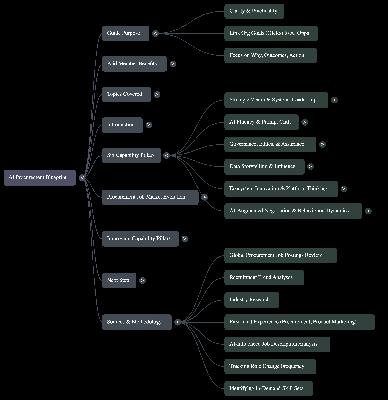
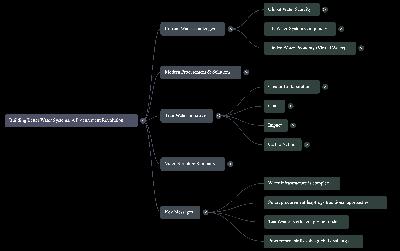
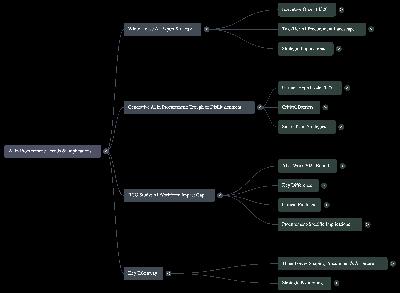
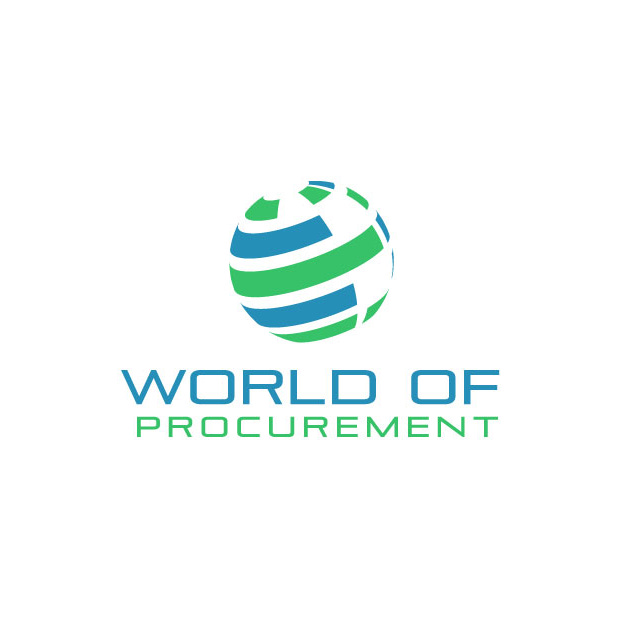
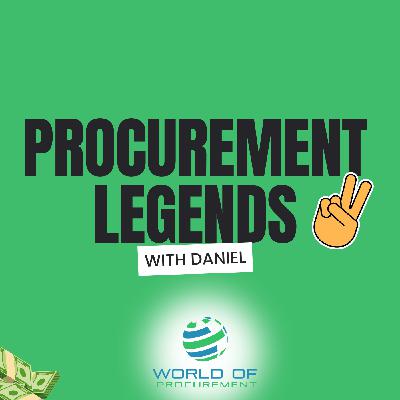


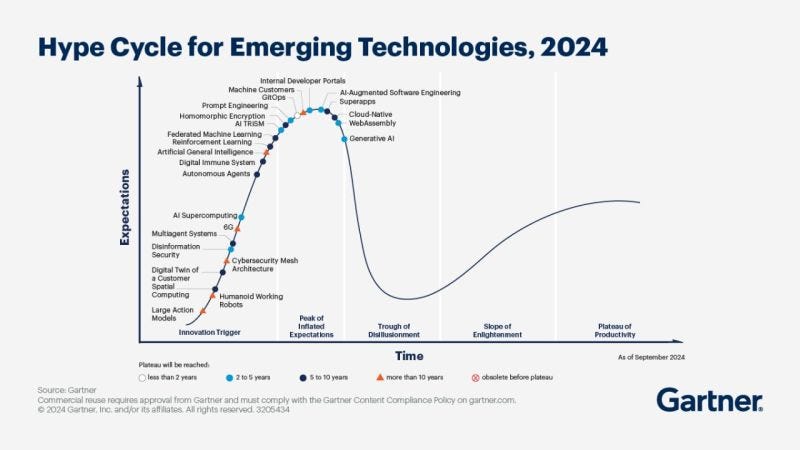

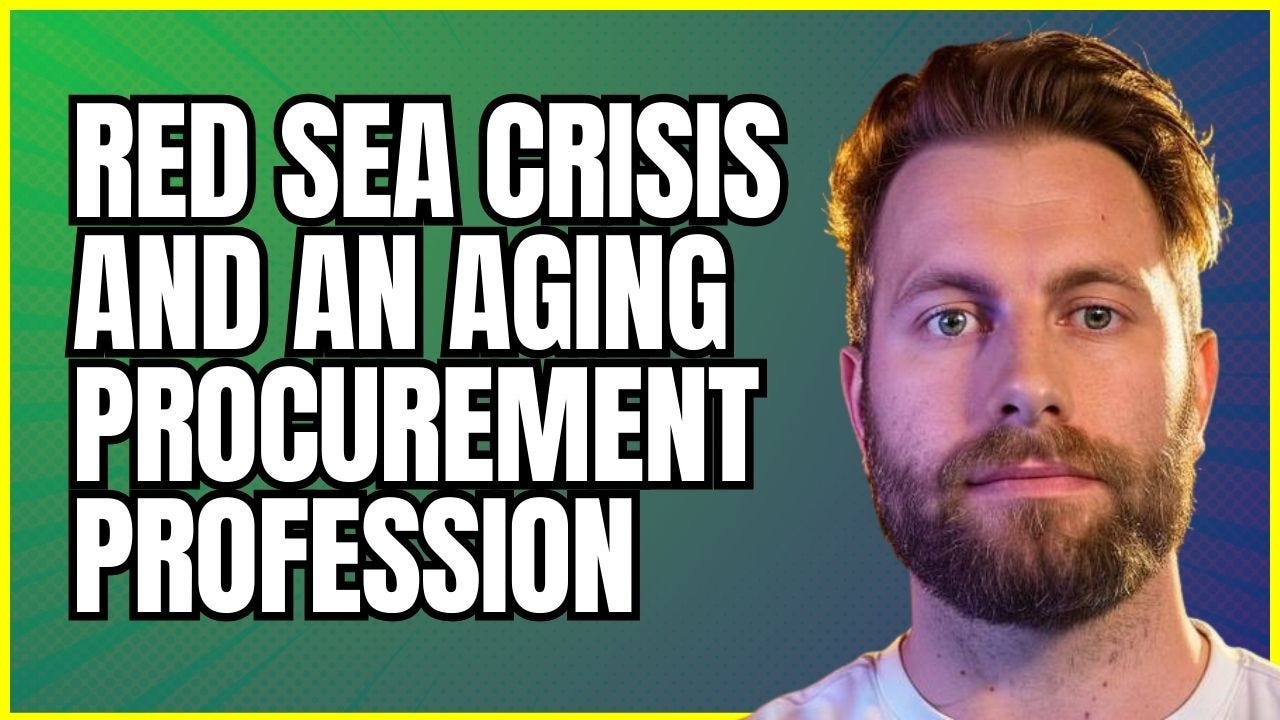


![Build a Procurement Personal Brand [Guide + On-Demand Webinar] Build a Procurement Personal Brand [Guide + On-Demand Webinar]](https://substackcdn.com/feed/podcast/1331541/post/141494136/c7a38b53179eead38415faf33bb36bc7.jpg)
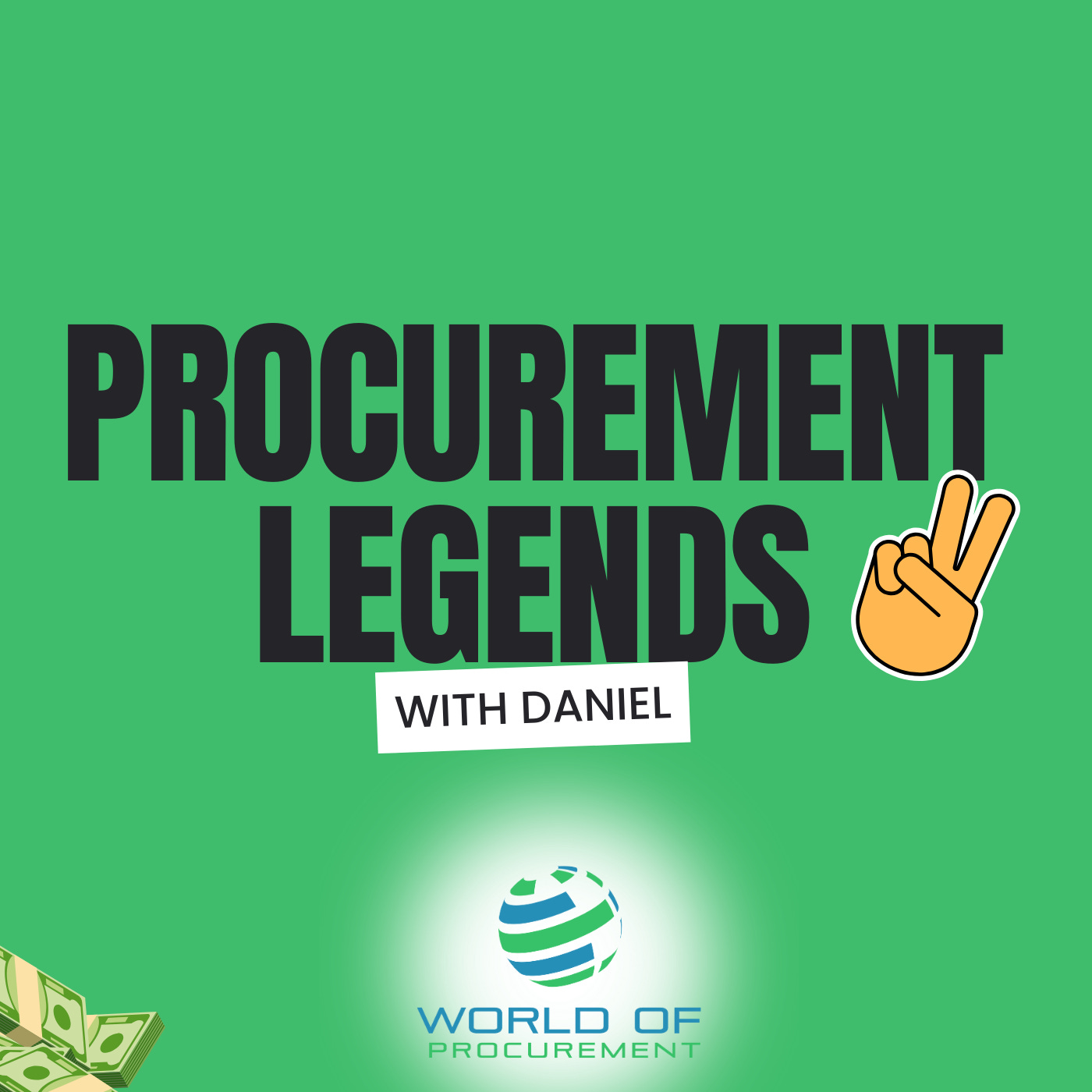



![How to HACK your Supply Chain [Video Podcast] How to HACK your Supply Chain [Video Podcast]](https://substackcdn.com/feed/podcast/1331541/post/139321849/9840b5d105d730d0ebaa20ea4155cb1f.jpg)

